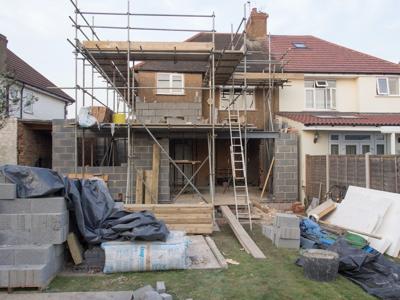
Sometimes, you might outgrow your home, making it too small to accommodate your family and properties. For this reason, many homeowners seek to add to their houses for a more comfortable and functional space. Expanding your home provides a better solution instead of moving. To complete a home addition project successfully, you must understand everything involved. For instance, you will need to know things like "How much concrete do I need?” Primarily, in a home-expanding project, the various designs of the building process flow together. Otherwise, you might not achieve what you desire. Here is a comprehensive guide on the essential steps to expand your home.
Assess Your Budget and Explore Your Options
The first thing you must do is determine what you wish to achieve from the addition. This way, you can note any hindrances and address them immediately. Does your expansion seek to expand the kitchen or create a separate room for friends and family entertainment? What is the scope of the project and the budget? Ensure you are all set for the work ahead to avoid inconveniences leading to time and money waste.
Additionally, you should set a realistic budget and be ready to compromise when needed. The good thing is that you can get professionals to help you work out an ideal plan.
Choose Your Contractor
Choosing an appropriate contractor is essential regardless of the size of the project. Besides, this is a critical determiner of whether the project will run smoothly or turn into a nightmare. An ideal contractor will help you understand what is needed and why you should choose a certain material and not the other. Thus, you can always be guaranteed that the project will run at the right speed while assuring maximum quality. But, you must ensure your contractor is reputable with liability insurance and a valid license.
Finalize on Materials Selection, Design and Permits
Before beginning your home additions project, you must ensure everything is in order. You should have selected the design and identified your source of materials. This ensures that the project runs smoothly and meets the set deadline.
On the other hand, you must obtain the necessary approvals and permits per local laws. Check that you meet all the local construction codes and regulations to avoid getting in trouble with the authorities. Again, you need to know where you will live during construction. While some projects can be done without affecting your existence, others require you to shift entirely to a different house.
Prepare and Begin the Construction
This step involves getting into the actual construction work. Ensure you have the right personnel to deliver the expected result.
Move-in
This occurs when the entire project has been completed, and now you can enjoy your space. Check for any adjustments or corrections that might be needed before settling in and have them done immediately. Most reputable contractors will include a warranty and do the necessary modifications without additional fees.
Here are some other articles related to your search:
Leveling Up Your Home: Things to Consider When Adding A Second Floor
Need more space? Before you start searching for new homes, consider a basement renovation.




(0) comments
We welcome your comments
Log In
Post a comment as Guest
Keep it Clean. Please avoid obscene, vulgar, lewd, racist or sexually-oriented language.
PLEASE TURN OFF YOUR CAPS LOCK.
Don't Threaten. Threats of harming another person will not be tolerated.
Be Truthful. Don't knowingly lie about anyone or anything.
Be Nice. No racism, sexism or any sort of -ism that is degrading to another person.
Be Proactive. Use the 'Report' link on each comment to let us know of abusive posts.
Share with Us. We'd love to hear eyewitness accounts, the history behind an article.